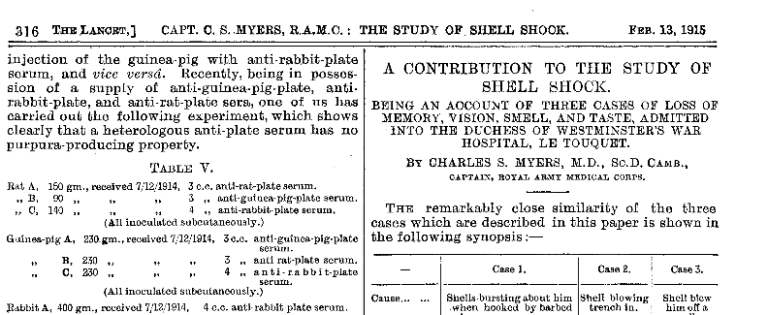Welcome to Shell-shock in Popular Culture: A Digital Archive!

This digital archive exists to catalogue, represent, and showcase digitized materials reflecting the influence of shell-shock, a form of trauma originating in violence and/or war, on popular culture and media following the First World War.
What is the timeline of this archive?
This archive spans from 1915, when Charles Myers coined the diagnosis in the pages of The Lancet, and cuts off on September 1, 1939, when the Second World War officially began. This archive traces the first use of shellshock during the First World War to its first appearances in popular culture.
This digital archive traces how shellshock represented a crisis of masculinity, which can be shown through its depiction in popular culture. As the public became aware of shell-shock through avenues such as newspapers, newsreels, and literature, their perceptions of shell-shocked and disabled men also changed. This archive is intended as a means of visualizing that paradigm shift in representation across poetry (in the work of war poets), film (through an interview), across comics, and through newspapers.